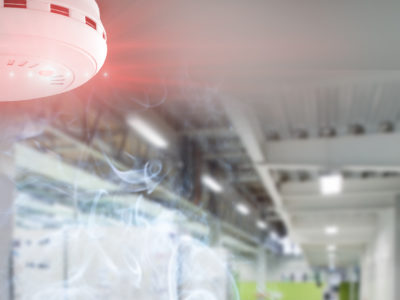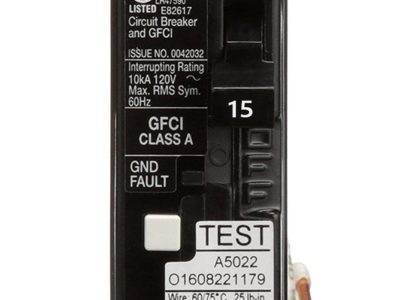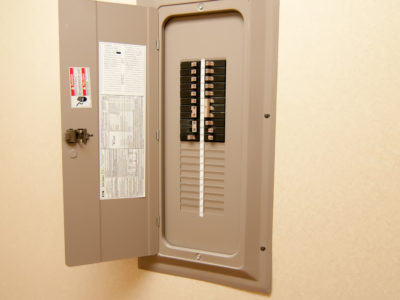Tips and advice to help keep your home as safe as possible
Smoke and deadly gases from a fire can spread quickly and quietly. In the unfortunate event of a fire in your home, every second counts. That’s why smoke and carbon monoxide (CO) detectors are a vital piece of safety equipment. They are always on guard, protecting your property, its contents, and most importantly, the people who live there.
Properly positioned, professionally installed, and regularly maintained smoke and CO detectors can buy you the precious time you need to react and respond quickly, giving you the chance to get out safely and call the fire department.
Types of Detectors
To keep your property as safe as possible, it’s important to install the correct types of devices. Which type of system or device you need depends on the type of building you are trying to protect.
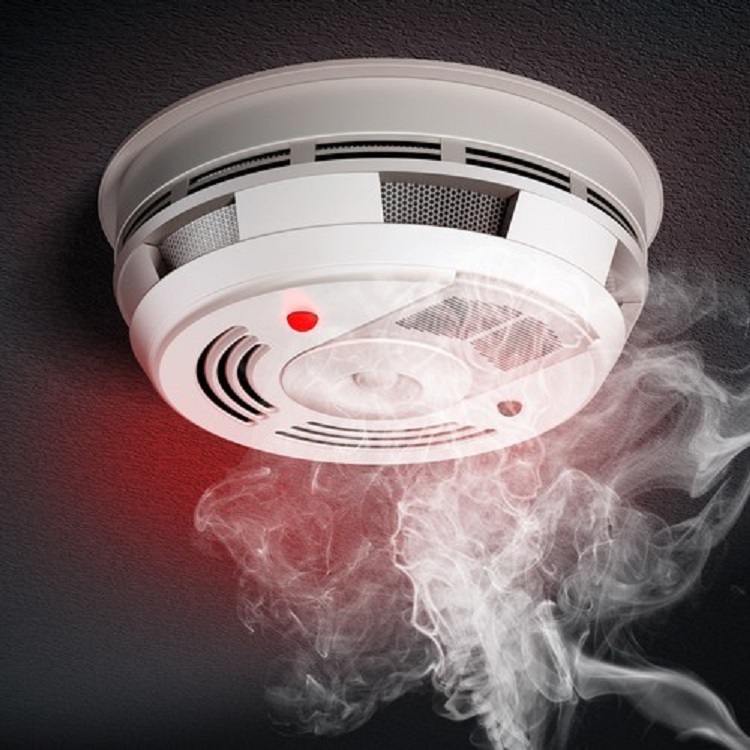
Fire Alarm
Fire alarm systems are needed in any large, multi-occupant building where it’s necessary to alert everyone in the building quickly. A fire alarm system is made up of interconnected components working together to detect and alert occupants of smoke or fire. In addition to smoke detectors installed throughout the building, fire alarm systems include bells, horns, and flashing lights for the hearing impaired. These alarms can also be activated manually by a pull-station.
Smoke Detector
Smoke detectors detect the presence of smoke from fires and sound an alarm to alert occupants of the danger. Smoke detectors for the home have a built-in alarm that can usually be heard all over the house. The two main types of smoke detectors for the home are ionization and photoelectric.
Ionization
Ionization smoke detectors are the most common household detectors on the market. There is a small chamber inside the detector with a tiny amount of radioactive material between two electrically charged plates. The radioactive material ionizes air particles in the chamber and an electrical current flows between the plates. When smoke enters this chamber it disrupts the flow of ions and reduces the flow of the current, activating the alarm. While these detectors are good at detecting smoke from flaming fires, they’re not great at detecting smoke from smouldering fires.
Your safety Our priority
Photoelectric
Photoelectric smoke detectors are better for detecting smouldering fires, but aren’t great at detecting smoke from flaming fires. These detectors have an inner chamber with an LED light that sends a beam of light across the chamber. When smoke enters this chamber it deflects the light to a photosensor that then triggers the alarm.
Cigarette Smoke Detector
Cigarette smoke detectors are specially designed monitors that can detect cigarette smoke using photoelectric technology. These units are generally small and movable, so you can place them wherever cigarette smoking is a concern, such as schools, hospitals, nursing homes, or rental properties. Some are silent and can be programmed to send a text or an email if smoke is detected.
Carbon Monoxide Detector
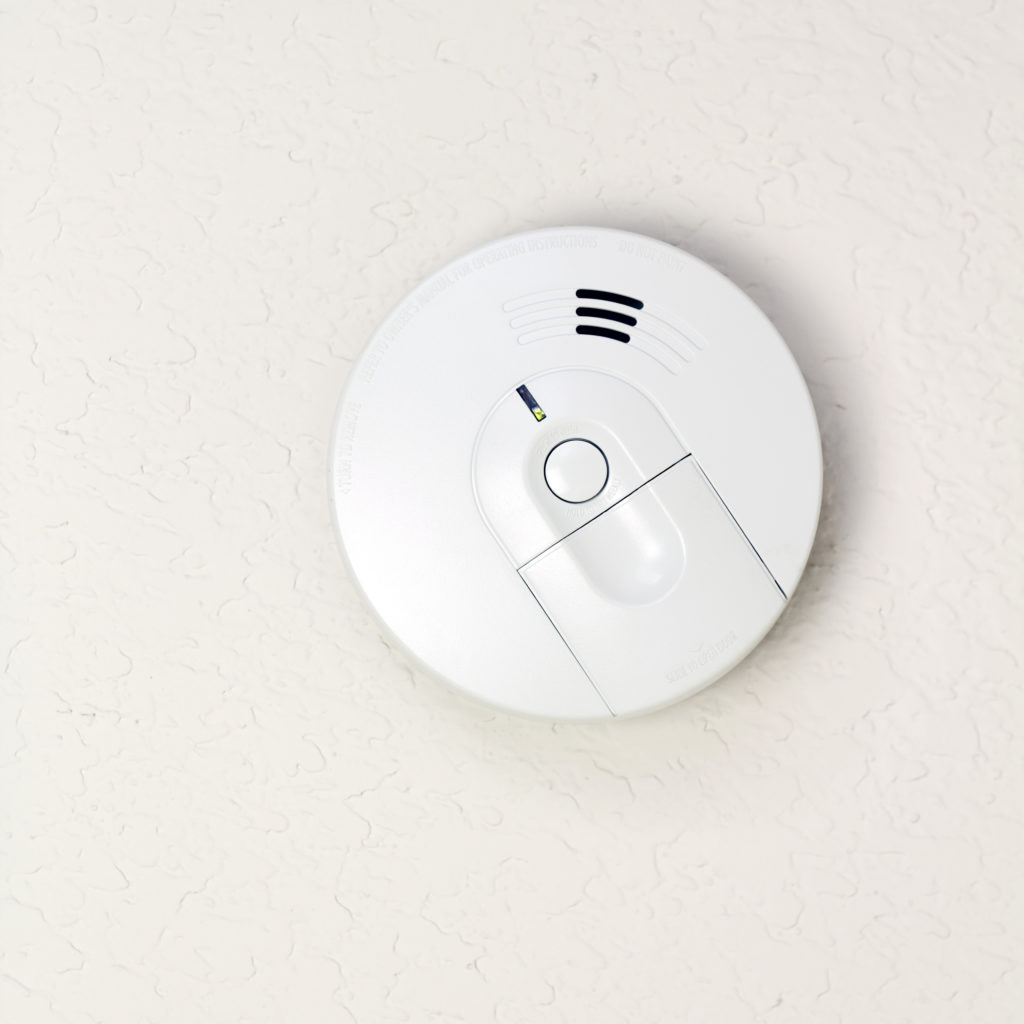
CO is a poisonous gas that is deadly to humans at even low levels. It attaches to the hemoglobin in our bloodstream, resulting in inadequate oxygen levels. Because CO is odourless and colourless, most of us can’t tell if it’s present until it’s too late. You should have a CO detector on each floor of your home, as well as outside each bedroom or sleeping area.
Which Detectors Do I Need?
Different types of buildings require different types of systems. Which system you need depends on whether you own a home, an apartment building or condo, or a commercial property.
In Your Home
Homeowners are required to have smoke and CO detectors on every floor of their home, as well as outside every sleeping area. There are 3-in-1 products that offer CO, photoelectric, and ionization smoke detection. It’s best to look for one that also has a flashing light as well as an alarm. It’s also a good idea to keep a fire extinguisher handy.
In an Apartment or Condo Building
Apartment or Condo buildings require two different fire alarm systems:
- Smoke and CO detectors in each suite. These are not connected to the building’s fire alarm control panel.
- A full fire alarm system in the common areas of the building such as elevators or stairways, storage areas, and laundry rooms. This system is connected to the fire alarm control panel, which must be monitored by a private company or the fire department. Cigarette smoke detectors can also be placed anywhere where ‘No Smoking’ is required and a sign is posted.
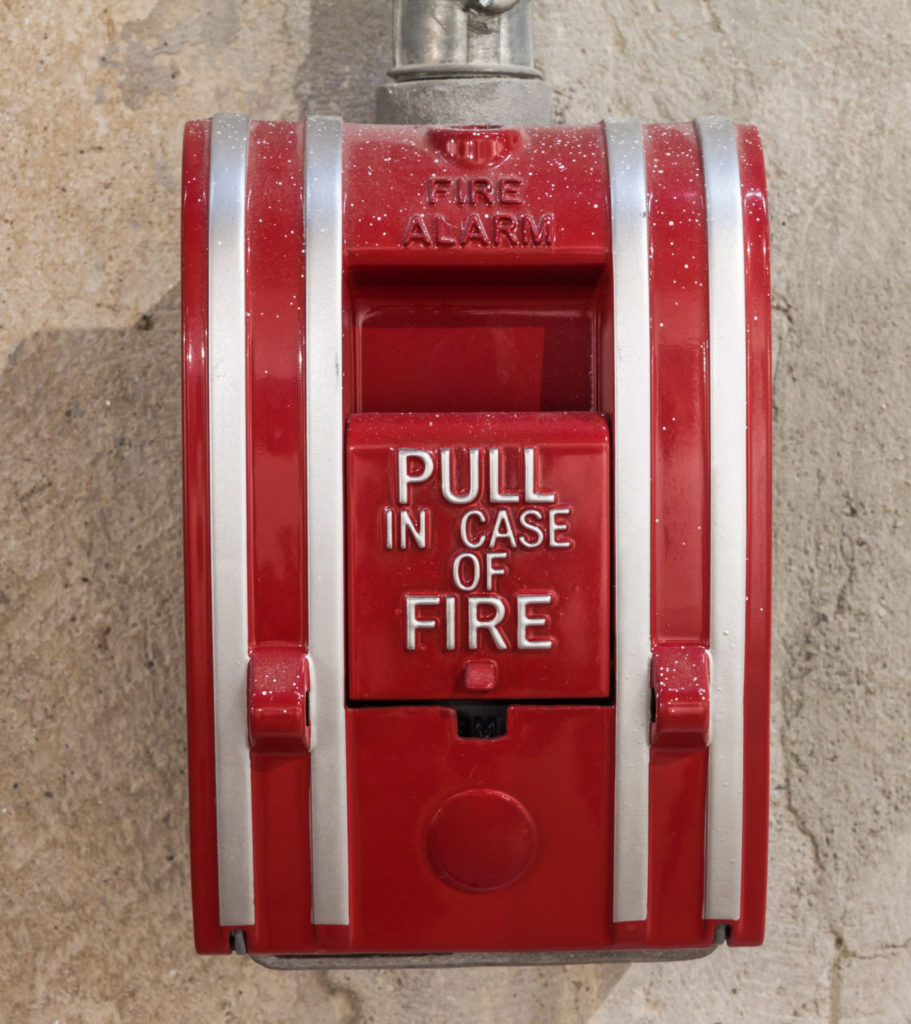
In a Commercial or Industrial Building
There are many Codes that apply to commercial and industrial buildings. It’s up to the building or business owner to ensure that all Codes are met. A commercial or industrial building requires a full fire alarm system that includes smoke detectors, bells or horns, flashing lights, pull-stations, and fire extinguishers. It’s necessary to hire a professional to ensure that all requirements are met, and that everything is installed and working properly.
The Best Products and Where to Find Them
There are many products to choose from. Some only need to be plugged in to an outlet, others will need to be installed by a professional electrician. Which one works best for you depends on your requirements as well as your budget.
Popular Products
Here are some of the best reviewed and most popular products on the market today.
- Google Nest Protect
The Google Nest Protect is a combination smoke and CO detector. It uses smart technology to link to your phone or computer. Using the Nest app, you can connect the Nest to your smart lights, setting them to flash if the alarm goes off, or connect it to your smart cameras to take pictures of any smoke or fire.
Its “split-spectrum” technology detects smoke from both flaming and smouldering fires. If smoke or CO is detected, a red light flashes on the unit and a voice announces what the problem is and where it has been detected. It can use either batteries or be hard-wired, depending on what works best for you, but Wi-Fi is required to use the smart features.
It has the added benefit of being visually appealing, though it doesn’t have a digital display like other CO detector models. It’s more expensive than regular smoke detectors, but is cheaper than other smart products on the market.
- First Alert SCO500B
The SCO500B is a battery-powered combination photoelectric smoke and CO detector. Using Wi-Fi, it can connect to up to 16 other devices. It uses voice alerts similar to the Nest Protect, but at a much cheaper price. It doesn’t have ionization technology so it’s not as good as other combination devices.
- X-Sense SD03
The X-Sense SD03 is a photoelectric smoke detector, with a 10-year battery. In addition to the alarm, it also has a bright LED light for the hearing impaired. It’s easy to install and its system is designed to minimize false alarms. Unfortunately, the SD03 doesn’t have ionization technology or a CO detector.
- First Alert BRK3120B
The BRK3120B is a combination photoelectric and ionization detector that’s hard-wired to your electrical system, with a backup battery for power outages. It doesn’t offer CO protection, but it can be connected to your CO detectors. It’s inexpensive and the product reviews are great!
- Kidde i12060
The i12060 is an inexpensive ionization detector that is hard-wired to your electrical system. It doesn’t offer photoelectric or CO protection, but it’s a good option if your budget is a concern.
Where to Buy Them
When it comes to buying your smoke and CO detectors, there are many options to choose from, both in-store and online. It’s a good idea to spend some time checking out several different websites to see the available options and find the best price. Customer reviews are a great way to see what other people have to say about the quality of a product before you buy it.
Here are some of the most popular retailers. Click on the links to check out their websites.
Home Depot is one of the largest home improvement retailers in Canada. They offer a great selection of options, both in-store and online. They also carry everything you’ll need for installation. Their staff are usually knowledgeable and can offer helpful advice. Depending on the weight of your order and where you live, shipping can be a little pricey if you order online.
Canadian Tire has a great selection of products, as well as all the hardware and tools you’ll need to install them. They offer in-store or curb-side pickup if you order online. Shipping to your home can be a little costly depending on your location.
Orka is a Canadian online retailer specializing in electrical supplies. They only carry Kidde brand detectors, so if you’re looking for another brand, you’ll have to shop elsewhere. But, shipping is free, and items ordered by 10am (EST) are sent out that same day. Most products can be returned within 30 days for a full refund.
The Google Store is the place to go if you’re interested in Google’s Nest Protect. Google offers free delivery on orders over $45 to most Canadian addresses, but they will not deliver to PO boxes. They’ll use the cheapest delivery option available, so it may take a while to receive your product, depending on where you live.
Amazon offers a huge selection of products in a wide range of prices. Their shipping is usually fast and is free for orders over $35. But be careful when ordering – Amazon marketplace offers items from 3rd party sellers that are often in other countries. Shipping from them is not always free and can take a very long time!
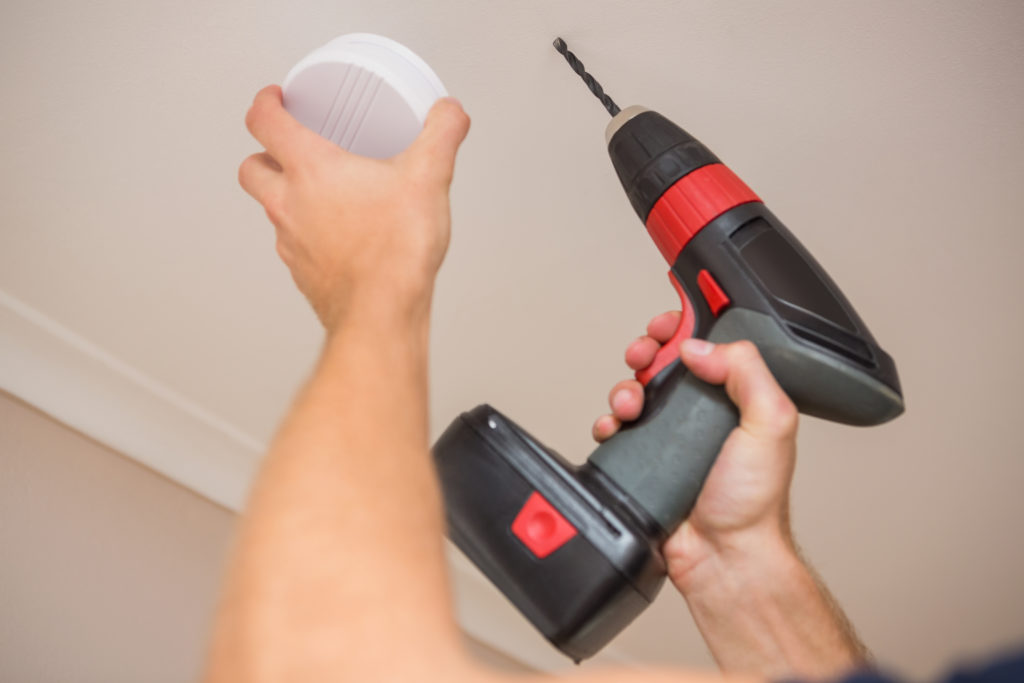
Installation
Correct placement and installation of detectors throughout your home can alert you to the smoke and dangerous gases from a fire before the fire has a chance to spread. In Canada there are rules and regulations for the proper placement of smoke and CO detectors. The Canadian Electrical Code states that a smoke detector is needed near every bedroom, as well as at least one smoke detector on every floor. A CO detector on every floor of a dwelling, no more than 5 metres from each bedroom, is also required.
There are also many rules outlining the exact placement of a smoke detector within each room, such as the distance from walls and windows, as well as the spacing of the units throughout your home. Detectors should be placed on the ceiling wherever possible. Because both heat and smoke rise, if you have to place a detector on a wall, make sure it’s less than 12 inches from the ceiling. To avoid any false alarms, don’t place any detectors too close to your stove or a steamy bathroom.
Some Codes require that all smoke and CO detectors in a home must be interconnected, so that if one alarm goes off, they all go off. This ensures that everyone hears the alarm and gets out safely. These alarms need to be hard-wired into the electrical system by a licensed electrician.
Maintenance
As important as it is to ensure that your smoke and CO detectors are properly placed and installed throughout your home, it is equally important that they are tested and checked regularly to ensure they are working properly. Every manufacturer has recommendations in their user manuals regarding how often to test your detectors and change their batteries. But a good guideline is to test each smoke detector once every month, and change all batteries once a year.
In addition to regular testing and maintenance, it’s advised that all units should be completely replaced every 10 years. This ensures your home is as protected as possible, using up to date equipment to meet current Codes and regulations.

Testing
To check that the batteries are working properly, press and hold the test button on the device. After a few seconds, the alarm should go off, letting you know that the batteries are fine.
To test that the detector itself is functioning properly, you need to spray test smoke near (but not on) the unit to make sure the alarm goes off. This also lets you know whether or not the batteries are working. Test smoke comes in a spray can and is found at most hardware stores.
Inspecting
Any commercial or residential fire alarm system needs to be inspected by a qualified technician, such as a licensed electrician, at least once a year. They’ll inspect all elements of the system, spotting any equipment that’s damaged or not up to current Codes. They’ll also test the functionality of all system components, making sure that everything is working properly.
Do you know how to test your smoke detector?
Our help is just a phone call away
A Beeping or Flashing Detector
It’s important not to ignore a beeping or flashing detector because it usually means one of two things: either the batteries are dead and need to be changed, or the detector itself has reached the end of its life and needs to be replaced.
Change the batteries if they are accessible by opening a panel on the unit. Be sure and cut the power to the unit first if it’s hard-wired into your home’s electrical. Once the batteries are replaced the beeping should stop. If the unit is still beeping you need to replace the unit.
If the batteries are sealed and not accessible, the beeping means the unit has reached the end of its life and will need to be replaced as soon as possible. Check the date on the detector – units with these types of batteries are designed to last about 10 years.
Conclusion
Make sure your home is well protected from fire, smoke, and dangerous gas by making use of the latest technology and keeping up to date on Code regulations. Having properly installed and functioning smoke and CO detectors can literally be the difference between life and death.
FAQ
Smoke detector, fire alarm, or CO detector – which one do I need?
For commercial or industrial buildings, as well as apartment buildings or condos, a fire alarm system including smoke detectors, bells or horns, flashing lights, and pull-stations, is required to adequately protect anyone inside the building. Apartments and condos must also be equipped with smoke and CO detectors in each suite. Smoke and CO detectors are a requirement in your home, and you need to install enough to cover all areas and floors of the home.
What do I do if my detector is beeping?
Change the batteries if they are accessible by opening a panel on the unit. Be sure and cut the power to the unit first if it’s hard-wired into your home’s electrical. Once the batteries are replaced the beeping should stop. If the unit is still beeping you need to replace the unit.
If the batteries are sealed and not accessible, the beeping means the unit has reached the end of its life and will need to be replaced as soon as possible. Check the date on the detector – units with these types of batteries are designed to last about 10 years.
Where do I buy my alarms and detectors?
Alarms and detectors are available from many retailers, both in-store and online. Hardware and home improvement stores, like Home Depot and Canadian Tire, are a great place to find a large selection, in a variety of price-points. Amazon has a huge selection of makes and models to choose from, and the Google Store is the best place to find Google’s Nest Protect – a product that has become very popular.
Trust the Job to a Professional Electrician
At New Line Energy electrical company in Calgary, our professional and efficient electricians can help with all of your smoke detector related needs. Our certified electricians are fully qualified and knowledgeable in all areas related to smoke detector installation, maintenance, and operation. We can help you choose the right brand and model of smoke detector to suit your needs. We will advise you on the correct placement of smoke detectors in your dwelling. We can install, test, repair, and replace your smoke detectors to ensure that they are always ready in case a fire breaks out. Do not take chances with this important, and possibly life saving, precaution.
Who we are?
New Line Energy is a dynamic and innovative electrical company.
We offer a wide range of electrical services for both residential and commercial properties.
